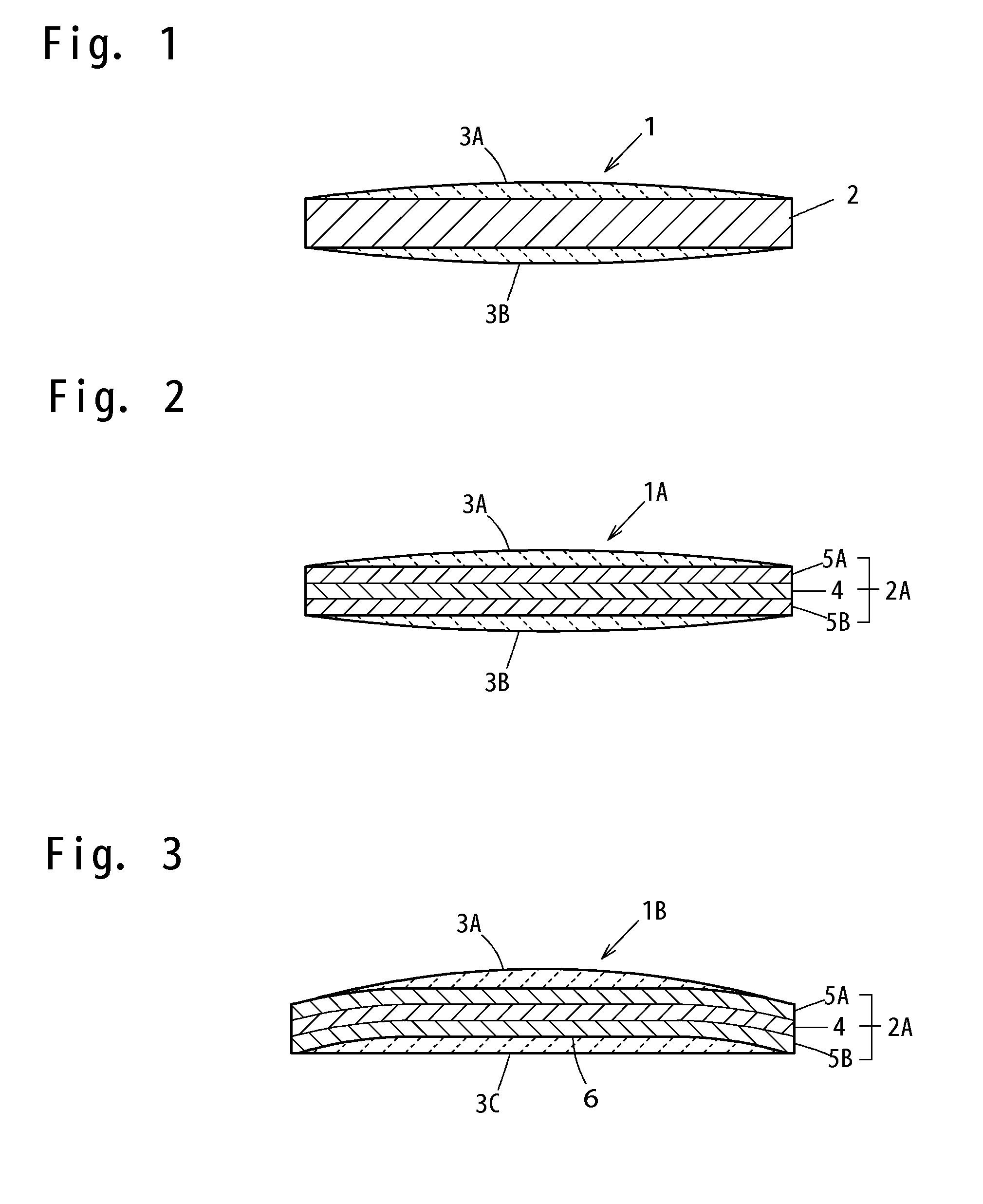Electrode Wire For Solar Cell
a solar cell and electrode wire technology, applied in the direction of conductors, single bars/rods/wires/strips, conductors, etc., can solve the problem that the semiconductor substrate is unlikely to crack, and achieve excellent electrical conductivity
- Summary
- Abstract
- Description
- Claims
- Application Information
AI Technical Summary
Benefits of technology
Problems solved by technology
Method used
Image
Examples
example a
[0049]Various clad materials were prepared by press-bonding surface layers of oxygen-free copper (Cu: 99.97 mass %, O: 15 ppm) to opposite surfaces of an interlayer of aluminum (specified by JIS 1N90, Al: 99.90 mass %) or Invar (Fe-36.5 mass % Ni) and annealing the resulting stack for diffusion. The clad materials (core materials) each had a thickness of about 160 μm, and the ratio of the thickness of the interlayer to the thickness of the clad material is shown in Table 1. Each of the clad materials were slit to form elongated plates each having a width of about 2 mm, and each of the elongated plates were cut to a length of about 150 mm, whereby a plurality of core materials were prepared. The core materials were annealed at about 500° C. for about one minute for softening. Furthermore, a plurality of core materials were prepared in substantially the same manner as described above by using a rolled sheet of the oxygen-free copper, and some of the core materials were annealed for so...
example b
[0054]Various clad materials were each prepared by press-bonding surface layers of oxygen-free copper (Cu: 99.97 mass %, O: 15 ppm) to opposite surfaces of an interlayer of aluminum (specified by JIS 1N90, Al: 99.90 mass %) or Invar (Fe-36.5 mass % Ni) and annealing the resulting stack for diffusion. The clad materials (core materials) each had a thickness of about 200 μm, and the ratio of the thickness of the interlayer to the thickness of the clad material is shown in Table 2. The clad materials were annealed at about 500° C. for one minute for softening. Then, each of the clad materials were slit to form elongated plates each having a width of about 2 mm, and each of the elongated plates were cut to a length of about 150 mm, whereby a plurality of core materials were prepared. Furthermore, a plurality of core materials were prepared by annealing a rolled sheet of the oxygen-free copper for softening in the same manner as described above and then slitting the annealed sheet.
[0055]...
PUM
 Login to View More
Login to View More Abstract
Description
Claims
Application Information
 Login to View More
Login to View More - R&D
- Intellectual Property
- Life Sciences
- Materials
- Tech Scout
- Unparalleled Data Quality
- Higher Quality Content
- 60% Fewer Hallucinations
Browse by: Latest US Patents, China's latest patents, Technical Efficacy Thesaurus, Application Domain, Technology Topic, Popular Technical Reports.
© 2025 PatSnap. All rights reserved.Legal|Privacy policy|Modern Slavery Act Transparency Statement|Sitemap|About US| Contact US: help@patsnap.com



